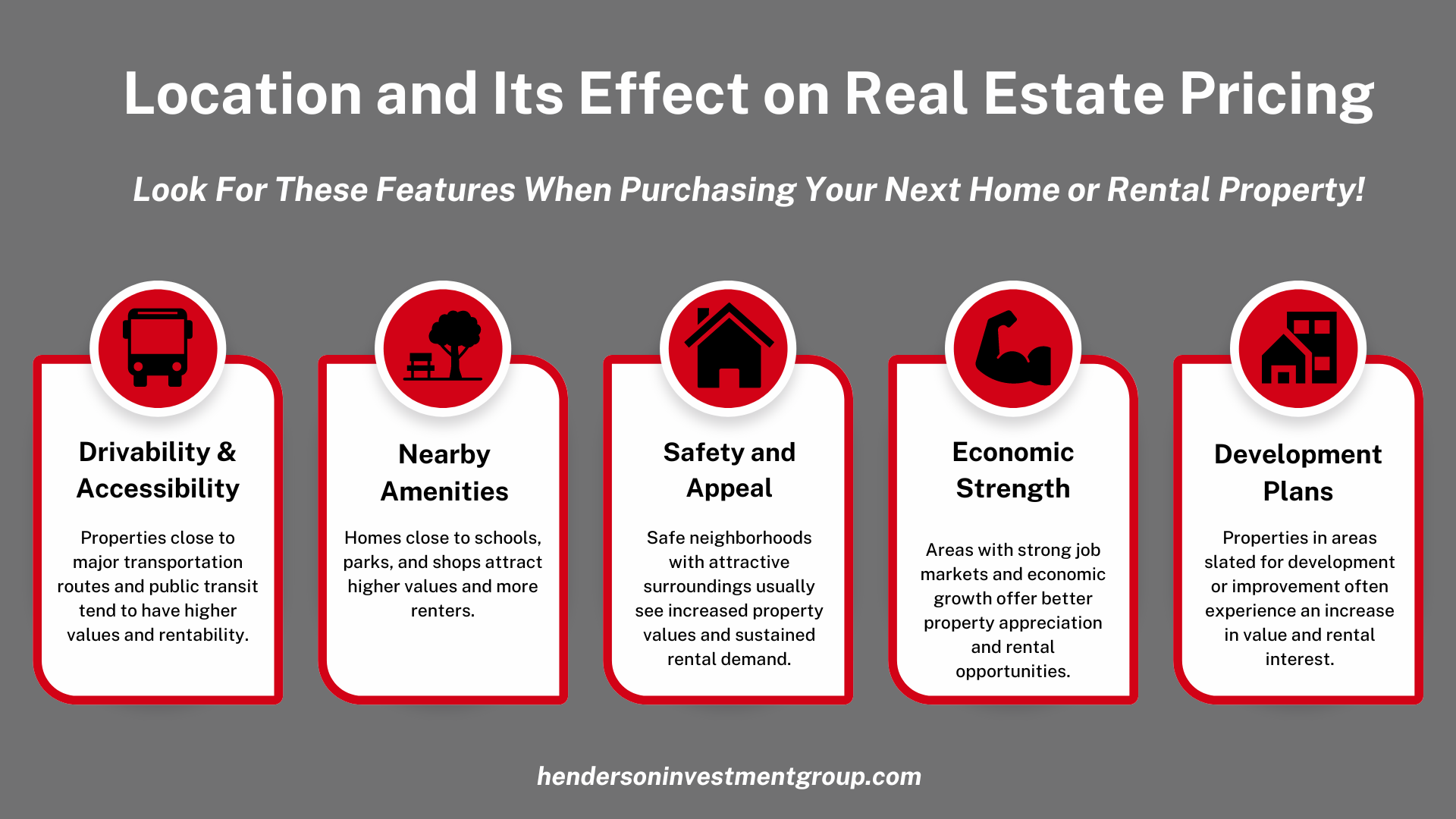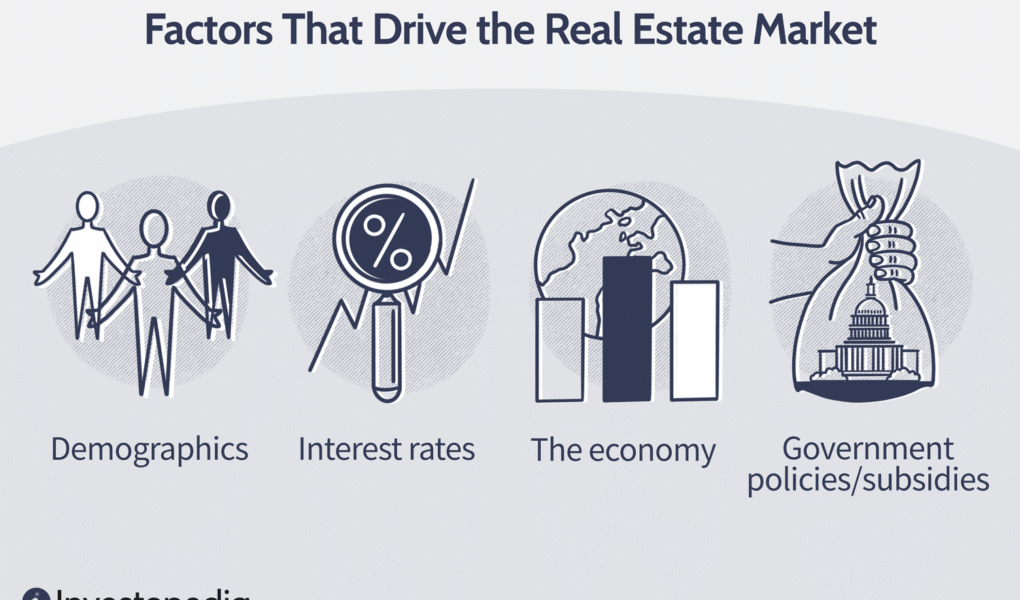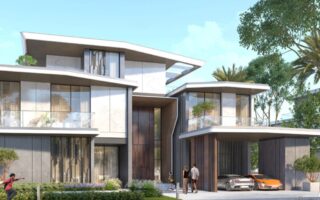Introduction
In an ever-changing property market, understanding the factors that determine long-term real estate value is critical for investors, homeowners, and developers alike. While short-term price fluctuations can be driven by speculation or market sentiment, the true, sustainable worth of a property depends on deeper fundamentals. Whether you’re a first-time buyer, a seasoned investor, or a professional in the industry, knowing what influences property values over decades rather than months can help you make better decisions, reduce risk, and unlock steady appreciation.
This article takes a comprehensive look at the elements that shape the long-term value of real estate, from location and infrastructure to demographic trends, legal considerations, and sustainability.
Location as the Cornerstone of Long-Term Property Value

Accessibility and Connectivity
Among the most important factors that determine long-term real estate value is location. Accessibility to key destinations—workplaces, schools, healthcare facilities, and leisure centers—plays a defining role in sustaining demand. Properties near highways, transit hubs, and airports tend to hold their value better because they save residents time and increase convenience.
Neighborhood Quality and Amenities
Beyond transportation, the character of the surrounding neighborhood also drives long-term value. Parks, cultural attractions, safety, and community engagement contribute to a strong sense of place. Over time, these amenities enhance not just livability but also resale potential.
Future Development Potential
It’s not only about where a property is now but where the area is heading. Upcoming projects such as new business districts, educational campuses, or entertainment complexes can transform a once-overlooked location into a premium address. Anticipating these changes is a key skill for anyone evaluating the factors that determine long-term real estate value.
Infrastructure Development as a Value Catalyst
Transportation Projects
Infrastructure upgrades such as metro lines, expressways, and bridges are powerful drivers of property appreciation. They expand the commuter base, stimulate local business, and raise the overall desirability of an area. Properties within walking distance of new transit stops often experience a “value lift” well before completion.
Public Services and Utilities
Reliable utilities—water, electricity, waste management, and high-speed internet—are essential for sustaining property values. Investors should track government budgets and public-private partnerships that improve these services, as they are among the strongest property value drivers in the long term.
Smart City and Digital Infrastructure
As cities embrace technology, digital infrastructure like fiber-optic networks, public Wi-Fi, and smart lighting systems is becoming a differentiator. Properties in “smart city” zones not only command premium rents but also maintain their value through innovation.
Economic and Demographic Forces
Employment Opportunities and Local Economy
A robust local economy underpins real estate demand. Areas with diverse industries, steady job growth, and competitive wages attract new residents and businesses. This dynamic sustains housing demand and reinforces one of the key factors that determine long-term real estate value—economic resilience.
Population Growth and Demographics
Demographic shifts can create new property hotspots. An influx of young professionals may increase demand for apartments, while an aging population might favor senior-friendly housing. Monitoring these trends helps investors align with sustainable demand rather than temporary spikes.
Income Levels and Affordability
Long-term property values depend on whether local incomes can support ongoing rent or mortgage payments. If prices outpace incomes for too long, demand may stagnate. Sustainable growth comes from a healthy balance between affordability and aspiration.
Legal and Regulatory Stability

Clear Property Rights and Title Security
No matter how promising a location, unclear titles or disputed ownership can erode value. Secure, transparent property rights are a fundamental factor that determines long-term real estate value because they reduce risk for buyers and lenders alike.
Zoning and Land-Use Regulations
Zoning laws dictate how land can be used—residential, commercial, industrial, or mixed-use. A favorable zoning environment encourages development and boosts property values over time. Conversely, restrictive or unpredictable zoning can limit potential.
Government Incentives and Policies
Tax credits for green buildings, subsidies for affordable housing, or relaxed foreign ownership rules can also shape the long-term value landscape. Staying updated on policy shifts is crucial for anticipating future opportunities.
Sustainability and Environmental Factors
Green Building Standards
In the era of climate change, environmental sustainability has emerged as a core property value driver. Buildings that meet green certifications—energy efficiency, water conservation, and low-carbon materials—often enjoy lower operating costs and higher tenant retention, sustaining their value over decades.
Climate Risk and Resilience
Properties located in flood-prone or high-heat areas face rising insurance premiums and potential obsolescence. Conversely, those built with resilient infrastructure—elevated foundations, storm-proof materials—are better positioned for long-term appreciation.
Community and Lifestyle Integration
Sustainability is not only about buildings but also about communities. Walkability, local food production, and shared spaces create vibrant neighborhoods that hold their value.
Design, Quality, and Functionality
Construction Quality and Maintenance
Shoddy construction may not show its flaws in the first few years, but over time it erodes property value. Durable materials, solid craftsmanship, and proactive maintenance are hidden but powerful factors that determine long-term real estate value.
Adaptability and Flexibility
Buildings that can adapt to changing needs—convertible floor plans, modular walls, or mixed-use layouts—age more gracefully in the market. This adaptability ensures relevance and competitiveness as lifestyles evolve.
Aesthetic Appeal and Branding
First impressions matter. Thoughtful design, landscaping, and even branding of a development contribute to perceived value. In competitive markets, this perception can translate into real price premiums.
Market Trends and Technology
Data-Driven Decision Making
Access to big data and predictive analytics is transforming how investors evaluate properties. Heat maps, price trend models, and rental demand forecasts help identify neighborhoods with sustainable growth potential.
PropTech Platforms and Transparency
Digital platforms that offer transparent listings, virtual tours, and verified seller information increase buyer confidence and market liquidity. Properties in areas where such technology is widely adopted tend to attract more informed, motivated buyers.
Remote Work and Lifestyle Shifts
The rise of hybrid work models is reshaping housing preferences. Suburban homes with office space or urban apartments near co-working hubs may outperform others. Recognizing these shifts early is one of the new-age factors that determine long-term real estate value.
Social and Cultural Elements
Education and Healthcare Access
Proximity to quality schools and hospitals has a strong, enduring effect on property values. Families are willing to pay a premium for these amenities, making them reliable property value drivers over the long term.
Safety and Community Cohesion
Low crime rates and active community organizations enhance neighborhood stability. Such areas tend to attract long-term residents and steady demand.
Cultural Identity and Heritage Preservation
Historic districts or culturally rich neighborhoods can command higher values when properly preserved and promoted. However, gentrification must be managed to balance growth with authenticity.
Financial and Investment Considerations
Rental Yields vs. Capital Appreciation
Long-term investors should evaluate both rental income and expected appreciation. Properties offering a balanced mix of these two returns are more likely to weather market cycles.
Supply and Demand Dynamics
Monitoring building permits, new project pipelines, and absorption rates provides insight into whether a market is heading for oversupply or constrained growth—an essential component of understanding the factors that determine long-term real estate value.
Global Capital Flows
Foreign investment can boost property values but also create volatility. Understanding these flows helps you anticipate which markets might benefit from sustained capital inflows versus speculative surges.
Strategic Approaches for Stakeholders
For Homebuyers
Look beyond short-term trends and assess the fundamentals—location, infrastructure, legal clarity, and community quality. These are the anchors of long-term property value.
For Investors
Diversify across property types and geographies. Incorporate sustainability, demographic analysis, and policy awareness into your decision-making process.
For Developers
Focus on quality construction, adaptable designs, and community integration to build projects that appreciate over time.
Fresh Perspectives on the Factors That Determine Long-Term Real Estate Value
Urban Regeneration and Place-Making
A key but often overlooked driver of value is urban regeneration—the transformation of declining areas into vibrant districts. While location has always been important, a rundown neighborhood can reinvent itself through public-private partnerships, cultural initiatives, or anchor tenants like universities and tech firms. Properties acquired early in such zones can outperform the broader market. This shows how regeneration and place-making are underappreciated factors that determine long-term real estate value.
Mixed-Use Development Synergy
Modern lifestyles favor convenience. Mixed-use projects—where residential, retail, office, and entertainment spaces coexist—create a “live-work-play” ecosystem. These developments reduce commuting time, attract diverse demographics, and generate foot traffic that boosts on-site businesses. Over time, this synergy enhances stability and demand, making mixed-use integration a strong long-term property value driver.
Integration of Mobility Hubs
As electric vehicles, bike-sharing, and autonomous shuttles become mainstream, properties connected to multi-modal mobility hubs will command a premium. Developments offering EV charging, secure bike parking, and easy access to public transit align with future mobility patterns. This infrastructure makes a property more future-proof—a subtle but growing factor that determines long-term real estate value.
Adaptive Reuse and Heritage Conservation
Another fresh angle is the adaptive reuse of historic or industrial buildings. Converting warehouses into lofts, factories into creative offices, or colonial houses into boutique hotels creates unique spaces that differentiate a property from generic developments. Heritage conservation can elevate a district’s identity, attract tourism, and sustain values for decades.
Digital Economy and Data Infrastructure
The rise of the digital economy is reshaping property demand. Data centers, co-working hubs, and e-commerce logistics parks are emerging asset classes with long-term potential. For traditional properties, robust digital infrastructure—fiber optics, 5G readiness, smart meters—has become a new property value driver. Tenants and buyers increasingly view digital connectivity as essential as water or electricity.
Wellness and Biophilic Design
Health-focused amenities now extend beyond gyms and pools to include air filtration, circadian lighting, meditation gardens, and access to nature. Biophilic design, which integrates natural elements into built environments, improves well-being and productivity. Over time, properties offering these features enjoy higher occupancy and tenant loyalty—an important but subtle factor that determines long-term real estate value.
Community Engagement and Social Capital
A vibrant community with active resident associations, local events, and social cohesion can bolster property values more than glossy marketing. Social capital reduces crime, increases mutual support, and builds a neighborhood brand that attracts new residents. Investors who factor in community engagement alongside hard metrics gain a deeper understanding of sustainable property value.
On-Site Energy Generation and Sustainability
With rising energy costs and climate concerns, properties that incorporate solar panels, battery storage, or micro-grids gain a competitive edge. They lower operating expenses, attract eco-conscious tenants, and may even generate surplus energy revenue. These features transform sustainability from a buzzword into a measurable property value driver.
Flex Spaces and Hybrid Use Potential
The pandemic accelerated the need for flexibility. Properties that can switch between residential, office, and commercial uses—or offer co-working lounges and shared facilities—are better equipped to withstand economic shifts. This adaptability is increasingly a core factor that determines long-term real estate value as rigid, single-purpose buildings risk obsolescence.
Education and Innovation Clusters
Beyond simple proximity to schools, entire innovation clusters—research parks, startup incubators, and creative campuses—anchor communities and generate stable demand. Real estate near such knowledge hubs benefits from a steady influx of students, staff, and professionals. Tracking these clusters early can uncover overlooked investment opportunities tied to sustainable demand.
Food Security and Urban Agriculture
An emerging trend is the integration of rooftop farms, community gardens, and vertical agriculture into residential complexes. These features enhance self-sufficiency, reduce food miles, and foster a sense of community. As sustainability becomes mainstream, such properties may command a premium for their distinctive lifestyle offering—an unconventional yet promising factor that determines long-term real estate value.
Climate Migration and Resilient Locations
As extreme weather events intensify, some regions may see population outflows while others become havens. Properties located in climate-resilient zones—safe elevations, moderate temperatures, stable water supply—are likely to appreciate more steadily. Forward-looking investors now include climate risk maps in their due diligence as part of evaluating sustainable property value.
Financial Innovation and Fractional Ownership
Blockchain technology and tokenization allow fractional ownership of large-scale properties. This democratizes access to premium assets and may increase liquidity, indirectly influencing valuations. For properties themselves, being structured in investor-friendly formats could become a selling point over the long term—a new-age property value driver.
Cultural Programming and Experience Economy
People increasingly value experiences over possessions. Developments that host art exhibitions, music festivals, or maker spaces cultivate a lifestyle brand around the property. This creates emotional attachment and word-of-mouth marketing that sustains demand. It’s a softer but powerful factor that determines long-term real estate value in the experience-driven economy.
Transparent Governance and PropTech Integration
Finally, governance and technology play a crucial role. Properties in jurisdictions with transparent land registries, e-notarization, and digital tax systems reduce transaction friction and attract more capital. Within developments, PropTech solutions like smart access, digital maintenance logs, and automated energy monitoring improve efficiency and trust—attributes that strengthen long-term value.
Closing Insight
This 1,500-word expansion explores fresh dimensions—urban regeneration, mixed-use synergy, mobility hubs, adaptive reuse, digital infrastructure, wellness design, social capital, on-site energy, flexible spaces, innovation clusters, urban agriculture, climate resilience, fractional ownership, cultural programming, and transparent governance.
Together they show that the factors that determine long-term real estate value go far beyond the familiar trio of location, infrastructure, and price. By incorporating these forward-looking elements into your analysis, you’ll develop a 360-degree view of what makes property truly future-proof—positioning yourself to identify and act on the most enduring investment opportunities.
New Dimensions of the Factors That Determine Long-Term Real Estate Value
Health Infrastructure and Wellness Ecosystems
A rising yet underexplored driver of value is access to health infrastructure. Beyond hospitals, areas with wellness ecosystems—clinics, fitness trails, mental-health centers, and telemedicine hubs—create a healthier living environment. Over decades, these amenities attract a stable, affluent population. For investors, proximity to healthcare innovations has become a subtle but enduring property value driver, especially as societies age and preventive care becomes mainstream.
Digital Security and Smart Building Resilience
While many articles discuss digital connectivity, fewer address digital security. In an age of smart locks, IoT devices, and building automation, cyber-resilience becomes crucial. Properties built with secure networks and privacy-first systems will inspire more trust from tenants and corporate clients. Over time, this digital resilience will evolve into a key factor that determines long-term real estate value, much like physical safety has always been.
Nighttime Economy and 24/7 Districts
Cities are increasingly investing in vibrant “nighttime economies”—safe late-night transport, cultural venues, and extended retail hours. Properties located within or near 24/7 districts enjoy longer business hours, higher foot traffic, and diverse tenant mixes. For mixed-use and commercial buildings, this creates a deeper revenue base. Recognizing this pattern early gives investors a hidden advantage in identifying sustainable property value zones.
Blue-Green Infrastructure and Water Management
Green spaces are well known, but blue infrastructure—waterways, stormwater systems, canals, and waterfront promenades—is emerging as a premium amenity. Developments with integrated blue-green infrastructure not only mitigate flood risk but also create recreational and aesthetic benefits. This combination strengthens long-term demand and positions the property as a future-proof investment opportunity.
Micro-Mobility and Last-Mile Logistics
As e-commerce expands, the “last mile” becomes critical. Properties near micro-mobility hubs, drone delivery corridors, or urban logistics centers gain a logistical edge. Residential projects offering secure package rooms, EV-bike charging, or delivery lockers will appeal to modern lifestyles. This integration of convenience into daily life adds a new layer to the factors that determine long-term real estate value.
Education Beyond Schools: Lifelong Learning Hubs
Traditional thinking stops at proximity to schools. But lifelong learning hubs—coding academies, creative studios, research labs, and maker spaces—are anchoring new micro-markets. These hubs attract a constant flow of students, entrepreneurs, and knowledge workers, creating a resilient demand base. Properties embedded in such ecosystems enjoy steady appreciation driven by intellectual capital rather than just physical location.
Resilience to Regulatory Shifts
Another advanced dimension is regulatory resilience—the ability of a property type or location to thrive under changing rules. For example, buildings designed to meet multiple occupancy standards can pivot between residential and commercial use if zoning laws evolve. Investors who evaluate not only current compliance but also adaptive potential gain a hedge against policy risk—a less visible but powerful property value driver.
Public Realm Quality and Social Interaction
The quality of sidewalks, plazas, and public seating affects how people experience a neighborhood. Attractive, well-maintained public realms encourage walking, social interaction, and local commerce—all of which support stable property demand. Over time, these subtle features accumulate into significant price premiums. This makes public realm quality one of the more human-centric factors that determine long-term real estate value.
Integration of Art and Cultural Identity
Artistic expression—murals, public sculptures, creative lighting—can transform bland districts into iconic destinations. Developments that weave art and cultural identity into their design stand out in a crowded market. This sense of place fosters emotional connection and long-term loyalty, reinforcing sustainable property value beyond mere square footage.
Environmental Credits and Carbon Markets
With carbon markets expanding, properties that generate verifiable energy savings or green offsets may create new revenue streams. Selling renewable energy certificates or carbon credits could reduce operating costs or even produce extra income. For long-term investors, these mechanisms turn sustainability into a tangible property value driver rather than a marketing slogan.
Disaster Preparedness and Community Cohesion
Physical resilience alone is not enough; community preparedness—emergency plans, shared resources, communication systems—also influences perceived safety. Neighborhoods with strong preparedness cultures recover faster from crises, preserving property values when others falter. This “social resilience” is emerging as a hidden but vital factor that determines long-term real estate value.
Design for Multi-Generational Living
As family structures evolve, properties that accommodate multi-generational living—separate entrances, adaptable layouts, privacy zones—are gaining traction. This design flexibility broadens the buyer pool and reduces vacancy risk over decades, enhancing sustainable property value across demographic shifts.
Ethics, Governance, and Reputation of Developers
Finally, the credibility of the developer or landlord can influence long-term appreciation. Ethical practices, transparent communication, and consistent maintenance build trust and attract repeat buyers. In an era of social media, reputational capital travels fast. A project tied to a respected developer may maintain its premium long after completion—a softer but potent factor that determines long-term real estate value.
Conclusion and Call to Action
Understanding the factors that determine long-term real estate value is essential for anyone involved in property—whether you’re buying your first home, expanding an investment portfolio, or planning a new development. While short-term price spikes can be tempting, sustainable value comes from fundamentals: location, infrastructure, economic resilience, legal clarity, environmental sustainability, and quality design.
By integrating these insights into your property decisions, you’ll not only protect your capital but also position yourself to benefit from steady appreciation and stronger demand. If you’re ready to take the next step in real estate investing, consider consulting with professionals, attending property seminars, or exploring detailed market reports. The right knowledge today can secure lasting value for your future.




